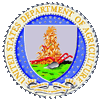How They Did It:
Department of Agriculture - Ted McPherson, Chief Financial Officer
USDA's First Clean Audit

What did you accomplish?
When I came to the Department of Agriculture in 2001 as Chief Financial Officer,
the department had never produced timely financial statements free of significant
errors or misstatements in its entire 140-year history.
In December 2002, with slightly more than a year's worth of work, the Department
of Agriculture and all its agencies received a clean audit opinion from the Office
of the Inspector General for Fiscal Year 2002 for the first time ever.
What is the nature of the problem you faced?
USDA is an organization of massive size and scope. Were it in the private sector,
USDA would be one of the largest companies in the United States. With $72 billion
in annual spending, 112,705 full time equivalent staff years, and $123 billion in
assets, USDA is exceeded generally in size in the private sector by only four
companies - General Motors, Ford, Exxon and Wal-Mart - so we are roughly equivalent
in size and diversity of lines of business to General Electric or Citigroup. We
also operate item processing and record-keeping services in executing payroll for
one-third of all Federal employees and providing administrative services for more
than 120 government entities, including the Thrift Savings Plan (TSP) that has three
million participants with $100 billion in investment assets. Last year alone, the
National Finance Center processed $26 billion in payroll disbursements and $12
billion of retirement plan contributions.
Managing an organization of this size and scope would be challenging under any
circumstances. But much of USDA's financial management was in disarray. USDA's
Inspector General was unable to express any opinion on USDA's financial statements
because the value of assets, liabilities, budgetary resources, net costs and related
items could not be determined. USDA simply didn't have the processes and systems in
place to record and track such things. In many instances we didn't know how much we
were spending or what we had bought.
What were the barriers to getting it solved?
Perhaps the biggest obstacle to progress was the fact that most USDA employees didn't
think it could be done. Hundreds of people had spent countless hours and dollars trying
to get a handle on USDA's finances, without success. They didn't take seriously our
commitment to solving USDA's financial management problems. We had to get those who have
been toiling at these problems for so long to believe we could achieve sufficient internal
control and data integrity to merit a clean opinion.
How did you overcome those barriers and solve the problem?
I set out four principles to guide our efforts.
- Focus on real results - while sound process is helpful, we are relentless in achieving
tangible results. Set clear goals and achieve them.
- Identify the responsible officials and hold them accountable for completing tasks.
- Set an aggressive pace for achieving goals. Speed is important and usually contributes
to better outcomes.
- Value leadership and talent. With the complexity of USDA's financial management challenges,
only strong leaders who surround themselves with talented employees can respond adequately to
the changing circumstances that this effort involved. The people, more than any process,
allowed us to achieve our goal.
Did you utilize outside resources?
We used largely existing resources and collaborated with skilled career government executives
and dedicated associates within USDA. Several key managers already had some initial success
converting USDA's many components to a common accounting system.
We did use about a dozen hand-picked "practitioners" (not consultants) as outside resources,
principally to catch-up on work that had not been performed for several years, such as cash
reconciliation and property accounting. We also hired three individuals from the private sector
with controller skills and one person with an outstanding background in information technology.
Each of these people understood internal control, data integrity, business processes, and
application of information technology. Perhaps most important, each of these individuals had
strong interpersonal skills.
What tools did you use to track progress?
I try to minimize the time reporting to intermediaries and maximize the time actually working.
Of course, we do have standard work plans and "plain talk" status meetings at short intervals.
But the key is the cohesiveness of the project team. The primary tool used to track progress
was the fact that an "owner" was personally accountable for the result or task we were after.
It was that "owner's" responsibility to keep the team apprised of the progress of that result
or task.
Is the problem solved for good?
No. However, the results we have achieved are real breakthroughs, and our focus now is on
sustaining, valuable solutions.
With such extreme disarray when we started, rehabilitation of this environment is a continuing
process, not an event, that undoubtedly will have unforeseen challenges in the future. But we
are ready to confront them.
There is no absolute assurance that there will not be new problems as we continue to turn over
the rocks. But USDA's subcabinet executives and line of business managers (agency heads) now have
a keener sense of their stewardship responsibilities for the resources with which they are entrusted
and of internal control than was the case in the past. Clear accountability at the operating level
is, therefore, an important part of USDA's culture.



